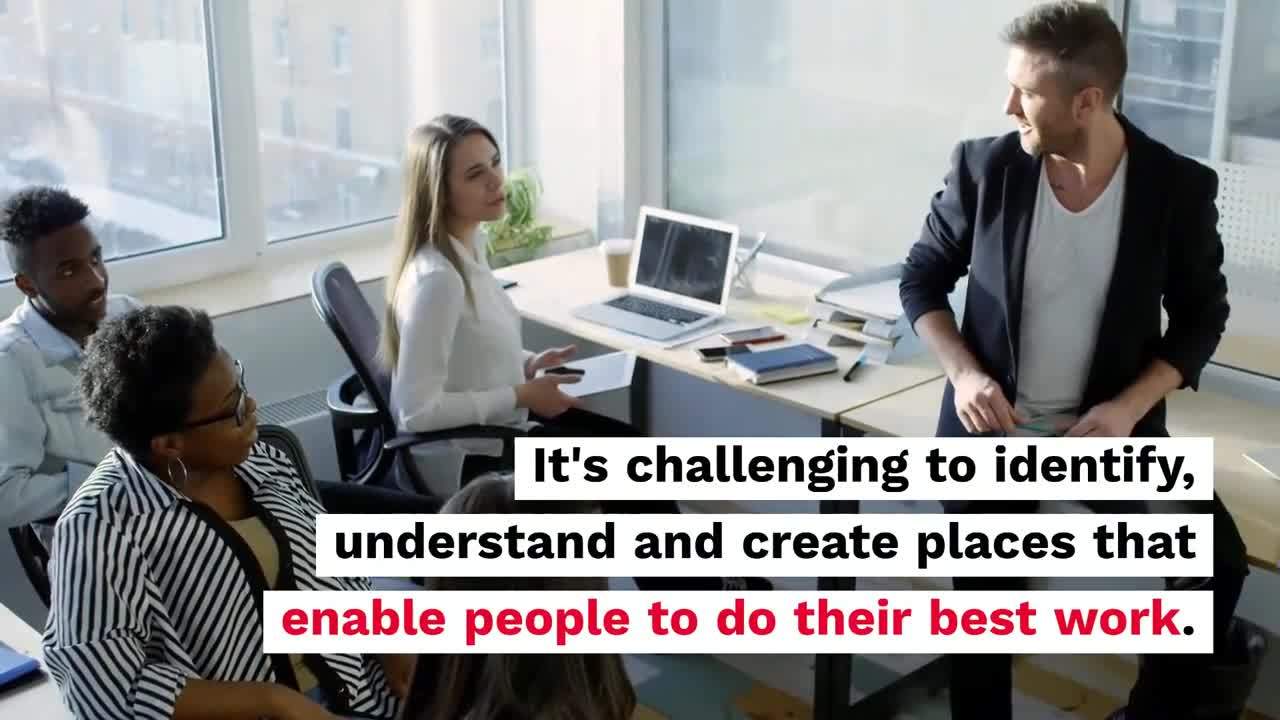One of the most challenging workplace issues is identifying, understanding and creating places that enable people to do their best work. This conversation around effective work environments has been reduced to binary choices largely based on stereotypes. Where in reality, companies that win the war for talent and drive productivity, offer a customized strategy sensitive to experience, sustainably, diversity and other critical elements.
Consider the open vs. enclosed debate. It is widely reported that there are only two choices. First, an open environment – a “management fad,” where concentration is only possible with headphones. Then an enclosed environment – seen as either hugely traditional and archaic, or the only solution to productivity. Stereotypes limit thinking on a particularly complex matter and risk us flip-flopping from open to private; coworking to traditional; agile to fixed; and never achieving the nirvana of productive places for all people.
We generate these stereotypes to simplify decision making. But, the workplace is a complex, multi-faceted concept.
The Employee
The collective employee experience is perhaps more diverse than ever and expectations in the world of work have shifted significantly.
The Experience Revolution
Experience loyalty is now earned through positive and personalized experiences. Increasingly, there is a mismatch between how real estate is delivered vs. employee expectations. Work environments are predominantly fixed assets, a product vs. a service, and are more often the source of negative experiences than positive ones.
Celebrate the Individual
As organizations seek to win the war for talent, individuals are in the driver’s seat. People increasingly choose how they shape their lives and how and where they work. But in creating modern work environments, the expectation is that one workplace can respond to the unique demands of 1,000 individuals, at any one time.
How many stars?
In the information-sharing age, we live and die by the opinion of others. This review-based culture has amplified the voice of those inclined to share, regardless of facts or evidence. The challenge lies in getting people engaged in a balanced, evidence-backed debate when the shriek of social media distracts so many.
The Workplace
There is no silver bullet in developing productive work environments for the collective employee. It is critical to focus on a workplace ecosystem that balances some key principles:
Diverse and Inclusive Organizations and Places
When supporting diverse populations in the workplace, organizations can provide a considered choice of workspaces and locations, but they need to empower people to use them. Activity-based environments, coworking hubs, and technology transformation programs become redundant and build antipathy, when an organization’s culture is driven by contrasting middle-management expectations, trust breakdowns and burnout. Inclusivity should be more than just an HR strategy. When making a significant change, with the workplace or otherwise, it starts with the process. For example, an organization implementing IoT sensors must open a dialogue with people early, seek to understand their requirements and allow them to ask questions. Inclusivity occurs when we enable collective ownership of the workplace.
Workplace Becomes an Experience
“Experience” describes how we perceive or encounter events. A marginal gains mindset prioritizes and aggregates many, small positive events or improvements to bring about large-scale improvement: a positive workplace experience. Continue to gather data to inform small, inexpensive changes. For example, shifting the underutilized open furniture settings every three months or introducing video conferencing in small meeting rooms.
Leveraging technology to build toward an experience-focused workplace is key. Start simple, implement something that can provide an improved experience for the majority, perhaps a room reservation system and digital community notice board. Then, consider how that solution can offer something personalized, i.e., it responds to “my needs” in this moment. Then, educate and train your people. Start with those providing the service, the facilities/experience team, and then educate the wider population.
Sustainable Environments and Change-Ready Organizations
Humans are becoming increasingly more aware of their role as stewards of the environment. Most organizations do not use their workplaces efficiently, resulting in unnecessary energy consumption, waste of resources and neglect of empty space. Therefore, we must do more to understand the environmental impact of how we occupy space, to drive more sustainable occupancy models. Many organizations can and already do build environments and strategies that incorporate activity-based environments, a balance of fixed lease and coworking space, all enabled by smarter technology choices. These need to be supported by organizational flexibility and a more mature view of where and when we work.







